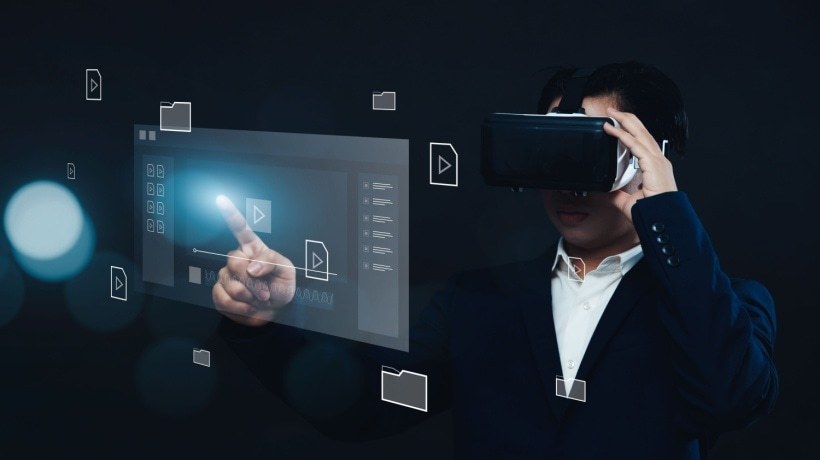Microlearning with AR and VR
Microlearning has stormed the Elearning world, offering short, targeted and effective learning experiences to occupied professionals and learners. As technology evolves, augmented reality (AR) and virtual reality (VR) now merge with microlearning, creating powerful new opportunities for immersive and interactive training. However, this combination also has unique challenges that must be carefully managed.
How ar and vr improve microlearning
1. Immersive learning experiences
AR and VR offer learners a practical experiential training which engages several senses. This makes learning more impactful, because users can interact with realistic simulations or virtual overlays that reflect real world scenarios.
2. Training based on the scenario
Microlearning modules delivered via VR can simulate high pressure situations such as emergency management, surgery or navigate in complex machines. AR, on the other hand, superimposes educational content on real environments, allowing learners to train while interacting with physical objects.
3. higher commitment and retention
The immersive nature of the RA and the VR captures all the attention of the learners, ensuring that they remain engaged and retain information. This is particularly useful for skills -based training where active participation is essential.
4. Custom and interactive content
RA and VR can offer personalized learning experiences on demand. Learners can progress at their own pace, receive comments and adjust their approach in real time.
Examples of AR and VR in microlearning
- Technical and procedural training
VR modules allow professionals to practice complex procedures in complete safety, especially in critical safety areas such as health care, pharmaceutical products and high -risk industrial environments. From surgical simulations to handling dangerous materials, learners can refine their skills in a controlled and risk -free environment before applying them in real world scenarios. - Employee support
AR provides hands -free advice in real time by overlapping step -by -step instructions, safety alerts or diagnostics directly on the equipment. This reduces errors and stimulates the effectiveness of technical, medical and manufacturing parameters. - General skills development
VR scenarios plunge learners into realistic interactions of customers, leadership challenges or conflict resolution exercises, including de -escalation training for police and emergency stakeholders. This allows a safe and reproducible practice in high issues situations, improving decision -making and communication skills.
Advantages of AR and VR in microlearning
- Real world application
Learners can practice in realistic environments, gaining confidence before applying their skills to work. - Engagement
Immersive experiences keep the learners concentrated and invested in the content. - Improvement of retention
Active participation in AR / VR scenarios improves memory retention. - Security and Profitability
The simulation of dangerous or expensive training scenarios eliminates real risks and reduces costs over time. - Personalized learning
AI VR / AR systems can adapt to the individual learners' needs, providing a tailor -made experience.
AR / VR combining challenges with microlearning
- Module length and configuration time
While Microlearning is targeting five to ten minutes, VR / AR modules often require slightly longer durations to offer their full value. In addition, putting headsets or the configuration of AR devices can take time, potentially disturbing the rapid and easy microlearning philosophy. - Mobility limitations
Traditional microlearning prosperous on mobile accessibility. The VR, however, often requires dedicated equipment and spaces, making it less portable. AR solutions, although more suitable for mobiles, can always depend on specific devices and environments. - Implementation cost
The development and deployment of AR / VR training can be costly initially, requiring investments in hardware, software and content creation. - User learning curve
Not all learners are warned in technology, and some may face challenges to adapt to VR / AR tools. Providing adequate support and training is essential.
Balance immersion with accessibility
To overcome these challenges, organizations must:
- Use VR / AR selectively
Reserve immersive modules for training scenarios where practical practice is crucial, such as high -risk or skills -based training. - Take advantage of portable solutions
Opt for autonomous VR headsets or AR applications that operate on smartphones and tablets to maximize accessibility. - Integrate into existing strategies
Complete Microlearning VR / AR with traditional mobile modules for subjects that do not require immersion. - Rationalization configuration
Preconfiguration of the devices and create intuitive interfaces to minimize the configuration time and the barriers to the entrance.
The future of microlearning with AR and VR
The convergence of AR, VR and microlearning represents an exciting border for Elearning. As autonomous VR devices and Mobile AR solutions become more accessible, the border between immersive training and convenience will blur, allowing learners to engage with advanced content at any time. In addition, innovations such as Personalization focused on AI and 5G connectivity will accelerate the adoption of these technologies.
Why the AR / VR microlearning is important for your organization
If your organization seeks to improve its training and development strategies, the combination of RA and VR with Microlearning offers unequaled potential. By creating engaging, practical and immersive experiences, you can make sure that learners are well prepared for real world challenges while maximizing the return on investment on your Elearning initiatives.
The future of microlearning is there, and it is immersive, engaging and transformer. Let's do the next learning generation together!

Athiya Global
Unlock affordable and personalized Elearning solutions with Athiya Global. We excel in the development or improvement of content, providing interactive modules that enrich learning while integrating transparently into your LMS. Profitable quality experience.
Originally published at
www.linkedin.com


